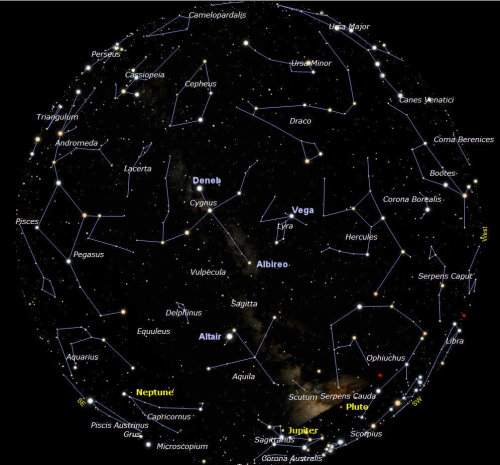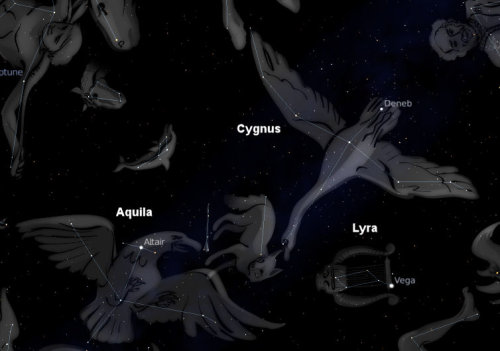
LAKE COUNTY – During the month of September, the Summer Triangle, discussed in last month’s column, shines brightly overhead.
Three bright stars make up the triangle: Deneb, Vega and Altair. They are shown on our star chart. Many of the stars in the sky have Arabic names. We will discuss how the stars in the triangle got their names.
Deneb
Deneb is one of the most luminous stars in the sky. It is located in the constellation of Cygnus the Swan. Deneb comes from the Arabic word dhaneb, which means “tail.”
Our drawing of the three constellations that hold the three stars in the summer triangle shows Deneb to be the tail of the Cygnus Swan.

Vega
Vega is the fifth brightest star in the sky, and is in the constellation of Lyra the Harp. Vega comes from the Arabic word waqi which loosely translates into “falling.”Ancient cultures often saw Vega as part of an eagle or vulture, hence the reference to falling.
It should be noted that General Motors named the Vega automobile after this star in the 1970s.
Altair
Altair is the 12th brightest star in the sky. It is located in the constellation of Aquila the Eagle. Altair is Arabic for “The Bird,” reflecting the fact that ancient cultures saw this constellation as a bird.
Aside from these stars, the planet Jupiter continues to shine brightly above the southern horizon. And on Sept. 16, about 30 minutes after sunset, the planets Venus, Mars, and Mercury can be seen low in the western horizon, along the star Spica.

To learn more about Lake County Skies in September, and to observe these objects through a telescope, visit Taylor Observatory (www.taylorobservatory.org) on Saturday, Sept. 20 from 8 p.m. to 11 p.m.
John Zimmerman has been an amateur astronomer for 50 years. He is a member of the Taylor Observatory staff, where, among his many duties, he helps create planetarium shows.
{mos_sb_discuss:2}